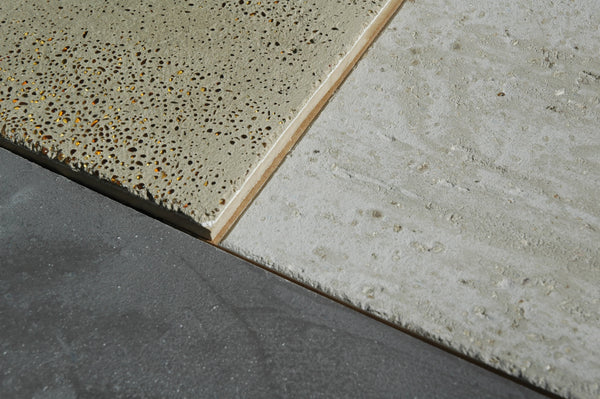Selecting Your Paint
Unlike conventional petrochemical paints, which generally come in a one-type-fits-all can, natural paints should be selected with your application in mind.
Step 1: Choose Your Paint or Plaster
When choosing your natural paint or plaster, ask yourself the following questions:
Are you looking for interior or exterior paint?
- We offer 3 different kinds of natural interior paints, and 2 types of natural interior plasters.
- We do not currently offer a paint that we recommend for the exterior.
Are you painting a new surface, e.g. drywall?
There are two ways to do this:
- If you are comfortable with plaster work, you can use our Smooth Lime Plaster or Venetian Plaster. If you want to add color, simply mix our pigments in with the plaster.
- If plaster work is daunting, you can first use our Vega Primer on your new surface, and then use one of our 3 paints.
Are you painting over a nonporous surface, such as very glossy conventional paint or glazed tile?
- All of our natural paints can be successfully applied to most surfaces, including conventional paints. Because thousands of chemical paint formulas are on the market, it is impossible for us to guarantee adhesion on all surfaces. We recommend that you do a test surface on an inconspicuous location before painting the whole room. Keep in mind that unlike conventional paints, Unearthed natural paints continue to harden over time, so a newly painted surface will become much more durable over the months following application.
Is the room you are painting going to be regularly humid?
- Unlike conventional paints, Unearthed natural paints do not contain any chemical biocides. Our paints are breathable, so occasional moisture or water splashes will dry out without a problem.
- If you are applying paint to a room that is consistently humid (such as bathrooms, small, enclosed kitchens or rooms in humid climates) our Lime Plasters are excellent choices. Unearthed lime plasters have a natural pH value of approximately 13. Because of this high alkalinity, they are extremely resistant to fungus and mold growth.
Are the walls going to get dirty regularly or are they in a low-traffic area that will stay clean?
- Although paint performance descriptions often focus on scrub-ability, the reality is that most people never scrub their walls. Ask yourself: how likely is it that these walls will need scrubbing?
- Vega Paint, Clay Paint, Textured Clay Paint, and Lime Plaster are resistant to water splashes and wiping.
- If you require a very durable, dirt and water resistant surface, we recommend that you use our Smooth Lime Plaster.
Do you want the most unique, eye-catching finish available, or would you rather use something that is easiest to apply and most economical?
- Lime plasters create stunning finishes that can be customized by mixing in ingredients like walnut shells and glass pearls. However, plastering is significantly more work than painting and the per square foot price is higher. Lime plasters must be troweled. With some practice (try a sample board first!), most people can learn to apply plaster themselves.
- Unearthed paints are a little easier to apply. Clay Paint and Vega Italian Marble Paint can be applied with a brush, roller, or airless sprayer. Textured Clay Paint can be applied with a brush or a roller.
Step Two: Choose Your Color
Clay Paint and Textured Clay Paint
You can achieve color in one of two ways with Clay Paint and Textured Clay Paint. If buying premixed, colored clay paint keep reading this section. If buying white clay paint, skip down to the pigment section under Vega Paint and Lime Plasters below.
Click here for the Color Chart
- Vibrant shades (A) are created by using full-strength pre-mixed tinted clay paint. To achieve these shades, simply buy a 2.3 kg/ 1 gallon sized bag of your desired color.
- Medium shades (B) are created by mixing white clay paint with tinted clay paint in a ratio of 3:10. To make a B shade, buy three 230 g/ 1/10th gallon packets of tinted clay paint and one gallon of white clay paint. This will make 1.3 gallons of paint.
- Subtle shades (C) are achieved by mixing white clay paint and tinted clay paint in a ratio of 1:10. To make a gallon of a C shade, buy one 230 g/ 1/10th gallon packet of tinted clay paint and one 2.3 kg/ 1 gallon bag of white clay paint. This will make 1.1 gallons of paint.
Vega Paint and Plasters
Click here for the Color Chart
- Vega Paint, Smooth Lime Plaster and Venetian Plaster are only sold in white. If you desire color, you can buy our pigments and mix them into the product. We offer 24 different pigments that can be mixed in to achieve 3 different shades-vibrant, medium, and subtle. Pigments are first mixed with water and then added to your paint/plaster once it has been mixed thoroughly. For more information on this process, visit our pigment page.


